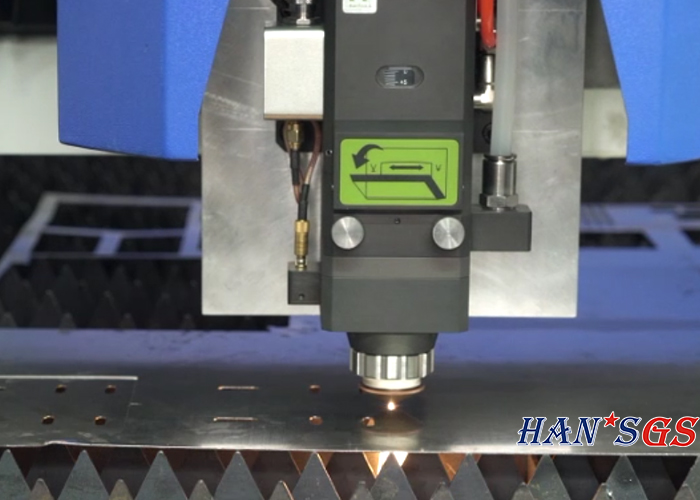As an advanced material cutting method, laser processing is increasingly accepted by sheet metal producers due to its low material waste, obvious cost effect in large-scale production, and strong adaptability to processing objects.
Today, China's crude steel output is not only the world's number one, but also exceeds 50% of global production. Developing countries and even some developed countries like Australia and South Korea are also using Chinese plate materials for cost savings. Therefore, they are looking forward to Chinese steel products. Adapting to laser cutting is not as good as researching and proposing methods and proposals for high quality processing of inferior materials. This article will talk about the problems often encountered in the processing of plate.
1. Carbon steel plate perforation problem
In the processing of thick plates, the perforation time accounts for a large proportion. Laser manufacturers have developed rapid perforation technology, which is more representative of high-energy perforation (fried holes). The advantage of this method is that it is fast (1 second, t16mm). As an example—the same below), the defect is not only affecting the processing of small shapes, but the huge energy injected during the perforation causes the temperature of the sheet to rise and thus affect the subsequent overall cutting process. With a small power pulse for perforation, the time is very long (12 seconds), which leads to a decrease in the efficiency of cutting and an increase in unit cost.
2. Cutting surface quality problem
When cutting thick plates, the cutting section is often encountered. Such cutting is not only questioned by the quality of the finished product, but also accompanied by over-burning and severe slag, so that the value of the high-priced laser processing machine is different from other cutting means.
3. Whole board processing stability problem
In the whole plate processing of domestic steel, the phenomenon of poor processing in local areas often occurs. This phenomenon is sometimes random, even when the machine is in good condition.
solution
1. Peak Piercing (HPP) Program
A high-peak pulsed laser with a small duty cycle is used, supplemented by non-fuel injected on the surface of the material to remove the attachment of the edge of the opening, and the reasonable frequency of the control pulse is cooled while perforating. The characteristic is that although the relative frying hole is slightly longer (3 seconds), the piercing aperture is small (about φ4 mm) and the opening edge has no attachment and the heat is low, which is convenient for the next normal cutting process, compared with the ordinary perforation. The efficiency is increased by 4 times.
2. Cutting section improvement plan

An important factor for improving the cutting profile for carbon steel is to control the heat input to the sheet and to ensure sufficient combustion of the laser irradiated portion. An important factor for improving the cutting profile for stainless steel is the improvement of the beam (improving the depth of focus) and the efficient use of the auxiliary gas. Glossy cutting technology is the result of improved vibration and nozzles.
3. Solution to ensure processing stability
At present, in order to improve the running speed of the processing machine, the laser machine adopts a structure commonly known as a flying optical path, that is, a form in which the material tray does not move and the processing head moves in the entire processable area. In order to compensate for the change of the relative position of the processing head and the light source, each manufacturer also tries to ensure the consistency of the spot in the processing range. The use of a variable curvature refractor is a common choice. Although this method is simple in structure, it changes the depth of focus, making it difficult to cut a plate that is extremely sensitive to the depth of focus (while keeping the spot unchanged and keeping the depth of focus constant). Using the isometric optical path (the length of the light propagation path between the source and the processing head in the processable range) avoids changes in depth of focus, resulting in consistent spot and depth of focus. In addition, the emphasis on heat input allows the heat accumulated in the sheet to be controlled, which can better solve the stability problem


 中文
中文 English
English France
France العربية
العربية русский
русский español
español português
português srpski језик
srpski језик Việt Nam
Việt Nam
 中文
中文 English
English France
France العربية
العربية русский
русский español
español português
português srpski језик
srpski језик Việt Nam
Việt Nam





